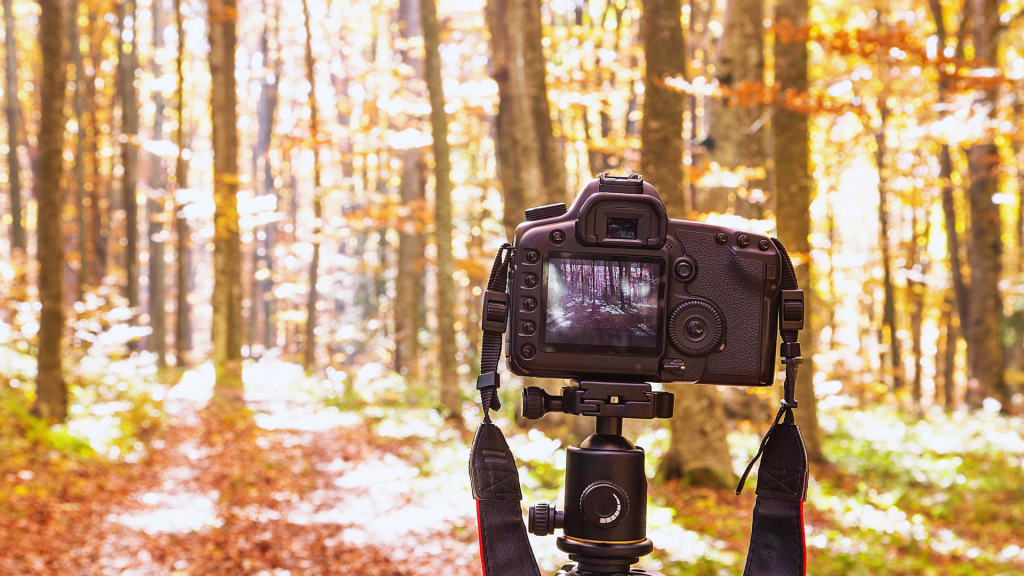Landscape photography captures the beauty of nature and its diverse environments, offering endless opportunities for creativity. Aspiring photographers often seek guidance on how to start their journey in this captivating field. Understanding the essential equipment, techniques, and locations will serve as a solid foundation for anyone looking to excel in landscape photography.
Beginners need not be overwhelmed by the technical aspects. Familiarizing oneself with basic camera settings, such as aperture, shutter speed, and ISO, can significantly impact the quality of the images produced. Being out in nature at the right time of day also plays a crucial role in achieving stunning results.
Choosing locations that resonate with personal interests can greatly enhance the experience. Whether it’s serene forests, majestic mountains, or tranquil beaches, finding inspiration in the environment is key. Equipped with the right knowledge and a passion for exploration, anyone can embark on the rewarding path of landscape photography.
Understanding the Basics of Landscape Photography
Landscape photography captures the beauty of nature in its many forms. It involves understanding composition, lighting, and the natural environment to create compelling images.
The Definition and History of Landscape Photography
Landscape photography focuses on depicting natural scenes, including mountains, forests, oceans, and deserts. This genre aims to portray the grandeur and serenity of the outdoors.
It has roots in the early 19th century, evolving with technological advancements. Notable early photographers like Ansel Adams played a key role in shaping this art form. Their work emphasized the importance of light and composition.
Today, landscape photography continues to evolve with digital technology. Photographers utilize various techniques to enhance their work, such as long exposures and HDR imaging. This allows for a richer representation of the environment.
Equipment Essentials for Beginners
For beginners in landscape photography, selecting the right equipment is crucial. Primary items include a camera, a sturdy tripod, and appropriate lenses.
- Camera: A DSLR or mirrorless camera offers flexibility with settings.
- Tripod: A sturdy tripod stabilizes the camera for sharp images, especially during low light conditions.
- Lenses: A wide-angle lens is essential for capturing expansive scenes. A telephoto lens can help isolate distant subjects.
Filters are also beneficial. ND filters reduce light entering the lens, allowing for longer exposure times. Polarizing filters enhance colors and reduce glare from water or wet surfaces.
Investing in quality equipment enhances the ability to capture stunning landscapes effectively.
Composing and Capturing the Scene
Success in landscape photography hinges on mastering composition, understanding light, and selecting the right locations. Each element plays a pivotal role in creating compelling images that resonate with viewers.
Understanding Composition Techniques
Composition is fundamental in landscape photography. The Rule of Thirds is a popular technique where the frame is divided into nine equal parts. Placing focal points along these lines or intersections can enhance image balance.
Leading lines guide the viewer’s eye into the photograph and can be roads, rivers, or paths. Framing helps isolate subjects using natural elements like trees or rock formations.
Additionally, consider depth by including foreground, middle ground, and background elements. This layering adds dimension and invites viewers to explore the scene.
Lighting and Weather Considerations
Lighting significantly impacts the mood and quality of landscape photographs. The golden hour, shortly after sunrise or before sunset, offers soft, warm light ideal for capturing stunning images.
Overcast days can provide soft, diffused light that reduces harsh shadows, making it suitable for detailed shots.
Weather also affects the landscape’s appearance. Dramatic clouds or storms can create dynamic scenes. Understanding how to utilize light and weather increases the likelihood of striking captures.
Location Scouting and Timing
Location scouting involves researching and exploring potential sites before shooting. Popular landscapes can offer familiarity, yet unique perspectives in lesser-known areas often yield surprising results.
Timing is equally critical. Seasonal changes can dramatically alter landscapes; for instance, autumn foliage provides vibrant colors, while winter introduces a serene palette.
Photography apps can assist in identifying popular spots and best times to shoot. Determining the ideal moment to capture a scene enhances the photographic experience.
Post-Processing and Editing
Post-processing is essential in landscape photography. It enhances the visual appeal and can transform images into stunning pieces of art. This section explores editing software options, basic techniques, and advanced methods for photographers.
Introduction to Editing Software
Choosing the right editing software is crucial for producing high-quality landscape images. Popular options include:
- Adobe Lightroom: Ideal for organizing, editing, and processing RAW images. It offers powerful features tailored for photographers.
- Adobe Photoshop: Best for detailed editing and manipulation, perfect for complex adjustments and enhancements.
- Capture One: Known for its superior color grading capabilities. This software is favored by professionals for its tethering features and workflow.
Familiarity with these tools will allow photographers to effectively refine their images to achieve the desired look.
Basic Editing Techniques
Basic editing techniques involve essential adjustments that elevate images without overdoing it. Key techniques include:
- Exposure Correction: Adjusting brightness to ensure details are visible.
- Contrast Adjustment: Enhancing the difference between light and dark areas for depth.
- Color Correction: Modifying color balance to reflect the scene accurately.
- Cropping: Framing an image to improve composition and focus attention on important elements.
These simple edits can significantly enhance the clarity and overall impact of a landscape photograph.
Advanced Editing for Landscape Photos
Advanced editing allows photographers to push creative boundaries. Techniques include:
- Layering: Using multiple layers in Photoshop to manipulate individual elements without affecting the whole image.
- HDR Processing: Combining multiple exposures to capture details from highlights to shadows, resulting in a balanced image.
- Selective Editing: Targeting specific areas of an image for adjustments, such as enhancing the sky without altering the foreground.
- Dodging and Burning: Accentuating highlights and shadows to create depth and drama.
Mastering these advanced techniques can elevate a photographer’s work, providing more control over the final outcome.
Showing Your Work
Presenting landscape photography effectively is crucial for building an audience. Creatives should focus on showcasing their best images through various mediums to attract potential clients or fans.
Creating a Portfolio
A well-structured portfolio is essential. It should highlight the photographer’s best work, demonstrating their unique style and capabilities.
- Select a Theme: Organize images around themes such as seasons, locations, or techniques.
- Quality Over Quantity: Include only the strongest images to make a lasting impression.
- Diverse Techniques: Showcase different techniques, such as long exposure, macro, or drone photography. This variety can display versatility.
Online platforms like personal websites are effective for hosting portfolios. Consider using services like Squarespace or Adobe Portfolio to create a professional appearance.
Sharing on Social Media and Online Platforms
Social media provides significant exposure for landscape photographers.
- Choose Platforms Wisely: Focus on visual-centric platforms like Instagram, Pinterest, and 500px.
- Engagement: Interact with followers and other photographers to build a community. Responding to comments can establish connections.
- Consistent Posting: Establish a regular posting schedule to keep the audience engaged. Use hashtags related to landscape photography to increase visibility.
Utilizing stories and reels can also showcase the creative process, sharing behind-the-scenes insights.
Prints and Exhibitions
Physical representations of work can leave a strong impression.
- High-Quality Prints: Invest in professional printing to ensure images reflect the original quality. Consider formats like canvas or metal for diverse options.
- Local Exhibitions: Participate in local art shows or galleries to gain exposure. Contact community centers or art venues for potential opportunities.
- Networking: Engage with other artists and attendees. Networking can lead to collaborations and future exhibition invitations.
Establishing a presence in galleries enhances credibility and can attract local buyers.

